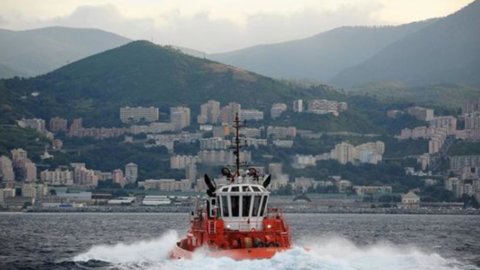Italy convicted for torture. The judges decided today European Court of Human Rights in Strasbourg, unanimously ruling that Italy, then governed by Silvio Berlusconi, violated the Convention on Human Rights during the raid on the Diaz school in Genoa in the night between 21 and 22 July 2001, when the G8 was underway in the Ligurian capital.
In particular, the Italian policemen involved in the episode violated article 3 of the Convention, according to which "no one shall be subjected to torture or to inhuman or degrading treatment or punishment".
At the origin of the proceeding there is an appeal presented by the Venetian protester Arnaldo Cestaro, 61 years old at the time, to whom the Italian State will have to pay compensation of 45 thousand euros.
THE FACTS OF THAT NIGHT
On that night almost 14 years ago the balance was 82 activists injured, 4 of which ended up in hospital with a reserved prognosis. After two days of clashes between demonstrators and the forces of order in the streets of Genoa, hundreds of policemen forcibly entered the school building, where the dormitory of the Genoa Social Forum had been set up, and attacked the activists found inside, many of whom were sleeping.
During the blitz, defined by the deputy commissioner Michelangelo Fournier as a beating from a "Mexican butcher", they were 93 protesters stopped from various Italian cities and from abroad. Of the activists arrested, 63 were transferred to hospital and about twenty were taken to the hospital Bolzaneto police barracks, where they were subjected to further violence. Among the most seriously injured, the English journalist Mark Covell, who ended up in a coma after being attacked and beaten by the agents.
To justify themselves, some of the heads of law enforcement agencies they brought Molotov cocktails into the Diaz school found in the city during the clashes and work tools recovered from a nearby construction site, in order to use them as evidence of the presence of numerous black blocks in the building.
A policeman, Massimo Nucera, also claimed to have been attacked with a knife by one of the guests of the structure, showing a cut on his bulletproof vest, but his version proved to be false and he was subsequently accused of slander. Overall, 125 policemen were charged.
THE LAW AGAINST TORTURE
Since 1989, bills have been circulating in the Italian Parliament to introduce the crime of torture. Only in the last two years has there been an acceleration, with a bill approved by the Senate and since last March 23 under consideration in the Chamber.
The measure, reworked several times and often the subject of divisions even within the majority itself, introduces the crime of torture into the Italian legal system and punishes it with imprisonment from 4 to 10 years. If the offense is committed by a public official, however, an aggravating circumstance is applied which increases the interval of the sentence from 5 to 12 years. The text has been modified compared to the one released by the Senate a year ago and therefore, even if the Deputies Chamber were to give the go-ahead quickly, the bill will then have to be examined again in Palazzo Madama.





